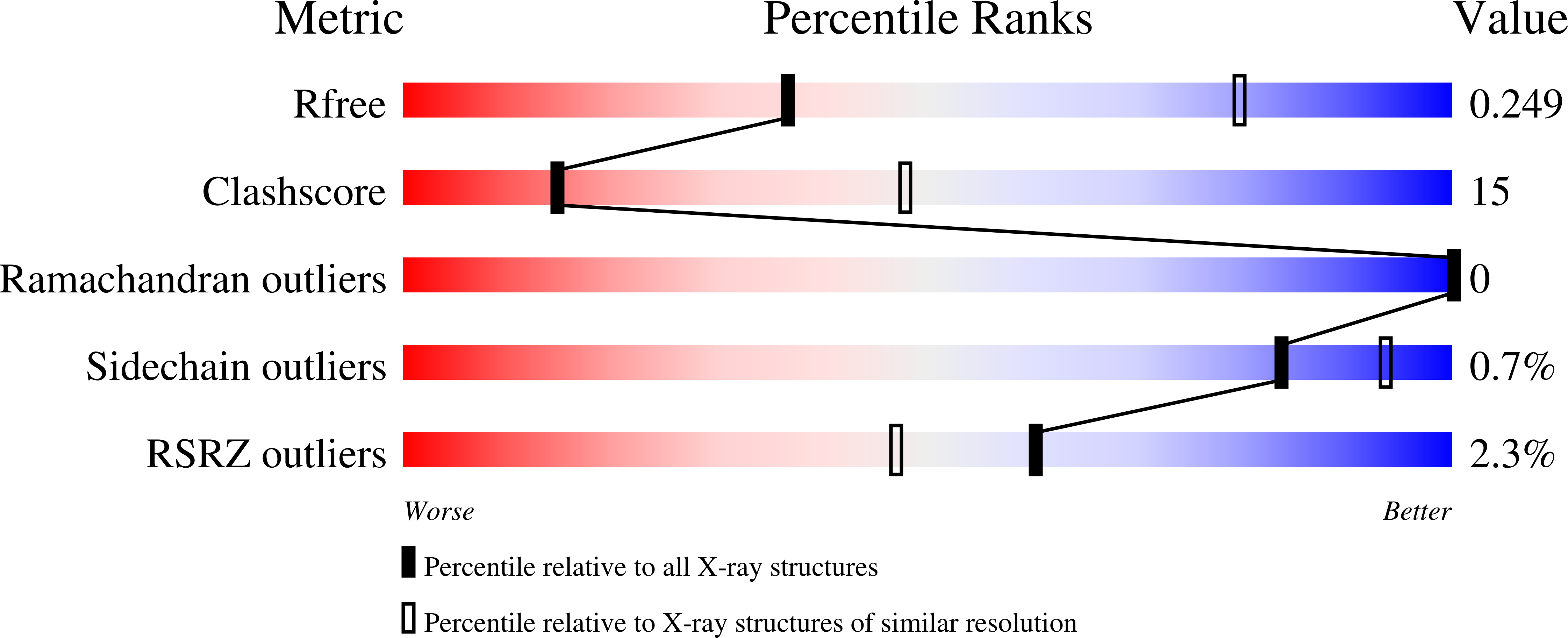Crystal structures of Moorella thermoacetica cyanuric acid hydrolase reveal conformational flexibility and asymmetry important for catalysis.
Shi, K., Cho, S., Aukema, K.G., Lee, T., Bera, A.K., Seffernick, J.L., Wackett, L.P., Aihara, H.(2019) PLoS One 14: e0216979-e0216979
- PubMed: 31181074
- DOI: https://doi.org/10.1371/journal.pone.0216979
- Primary Citation of Related Structures:
6BUM, 6BUN, 6BUO, 6BUP, 6BUQ, 6BUR, 6CWJ, 6DHJ - PubMed Abstract:
An ancient enzyme family responsible for the catabolism of the prebiotic chemical cyanuric acid (1,3,5-triazine-2,4,6-triol) was recently discovered and is undergoing proliferation in the modern world due to industrial synthesis and dissemination of 1,3,5-triazine compounds. Cyanuric acid has a highly stabilized ring system such that bacteria require a unique enzyme with a novel fold and subtle active site construction to open the ring. Each cyanuric acid hydrolase monomer consists of three isostructural domains that coordinate and activate the three-fold symmetric substrate cyanuric acid for ring opening. We have now solved a series of X-ray structures of an engineered, thermostable cyanuric acid ring-opening enzyme at 1.51 ~ 2.25 Å resolution, including various complexes with the substrate, a tight-binding inhibitor, or an analog of the reaction intermediate. These structures reveal asymmetric interactions between the enzyme and bound ligands, a metal ion binding coupled to conformational changes and substrate binding important for enzyme stability, and distinct roles of the isostructural domains of the enzyme. The multiple conformations of the enzyme observed across a series of structures and corroborating biochemical data suggest importance of the structural dynamics in facilitating the substrate entry and the ring-opening reaction, catalyzed by a conserved Ser-Lys dyad.
Organizational Affiliation:
Department of Biochemistry, Molecular Biology and Biophysics, University of Minnesota, Minneapolis, Minnesota, United States of America.















